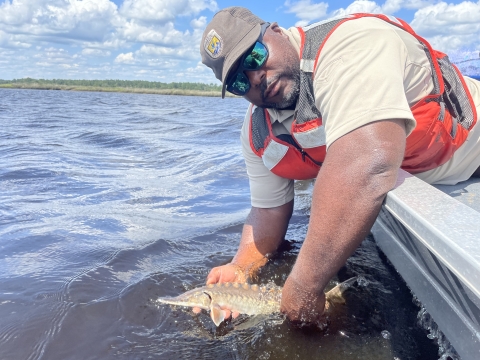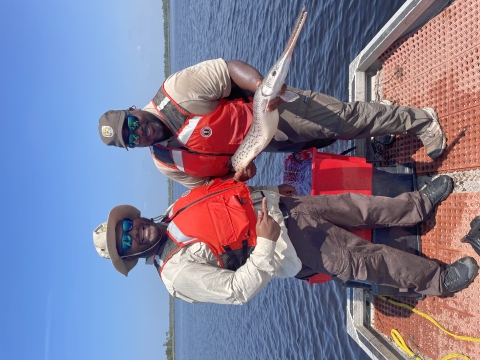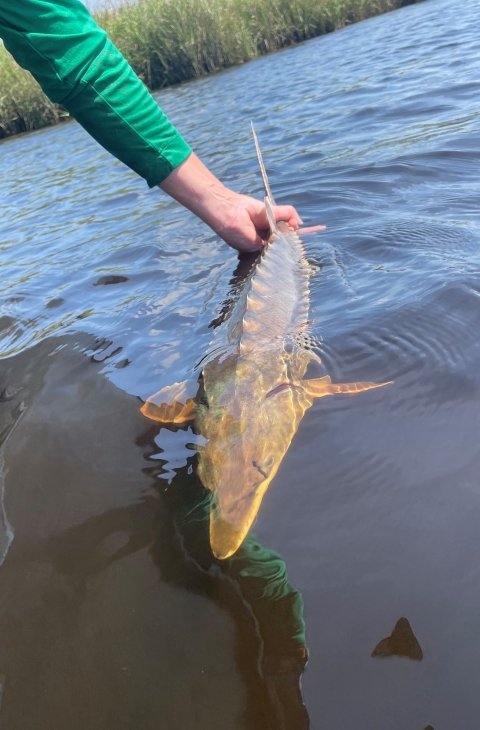As many of us around the country are hearing reports of water temperatures in South Florida hitting highs that may make a swim in Biscayne Bay feel like a jacuzzi dip, staff from the Peninsular Florida Fish and Wildlife Conservation Office (FWCO) are seeing water temperatures reaching 82°F on the northern boundary of the state, the St. Marys River. As water temperatures on the Florida/Georgia line warmed to 82°F, the high temperature threshold for limiting thermal stress during capture, the FWCO crew wrapped up this year’s sturgeon sampling efforts on the St. Marys River.
The historic range of the Atlantic and shortnose sturgeons extends from the St. Lawrence River in Canada to the St. Johns River, Florida. The St. Marys is the second-most southern river in the Atlantic and shortnose sturgeon’s range. A river system that historically hosted spawning populations of both species. Although years of over-harvesting, habitat loss, dredging, and impeded access to suitable spawning grounds due to dams and impoundments have resulted in range wide population declines with populations in the St. Marys Rivers declining to near zero levels. In the mid-1990s a limited survey on the St. Marys River suggested that the Atlantic and shortnose sturgeon populations had been extirpated. Renewed interest into the status of St. Marys River sturgeon populations fueled surveys in the early 2000’s in which small numbers of sturgeon were collected, pointing to possible extant populations. Although many questions had yet been answered, like what is the current population status of both species? Where is and what is the availability of critical spawning habitat in the St. Marys? Were the fish captured migrating in from a different river system or were these fish from the original St. Marys population?
To further look into these questions a St. Marys River Restoration Committee was formed and the Peninsular Florida FWCO, working with University of Georgia researchers, began working on the River conducting gill net surveys and sonar-based habitat assessments. The completion of the 2023 sampling season represents the 8th year the FWCO has sampled the St. Marys River for Atlantic and shortnose sturgeon. This long-term monitoring program hopes to help in determining distribution, abundance, population dynamics, and recruitment trends. Genetic samples taken from captured sturgeon will help to suggest which river system each fish originated in, while habitat surveys continue to aid in identifying and protecting critical spawning areas. This continued effort not only benefits the wildlife and waterbodies studied, but also allows for much cross-program training. This past season FWCO staff was joined by staff from Fish and Aquatic Conservation Headquarters, Georgia Ecological Services Field Office, Okefenokee National Wildlife Refuge, University of Georgia, and the St. Marys Riverkeeper.






